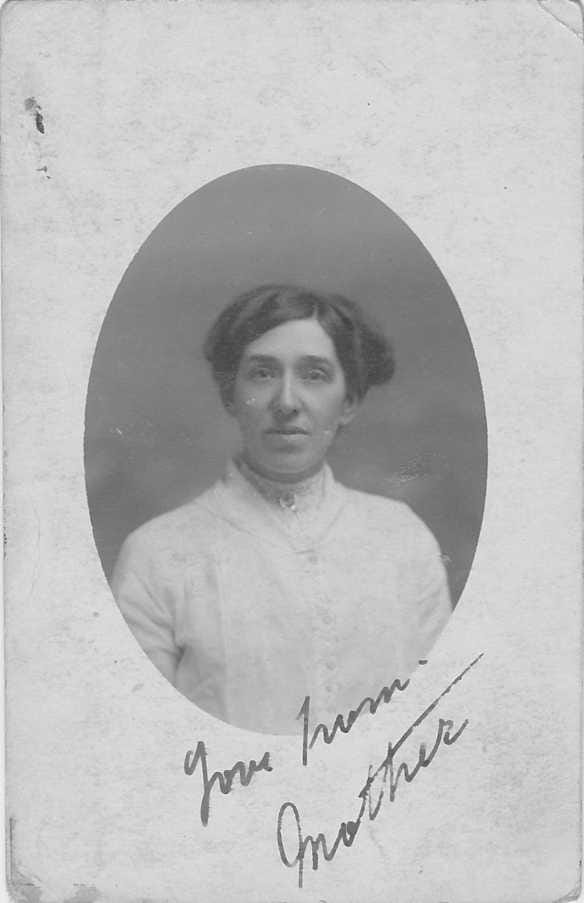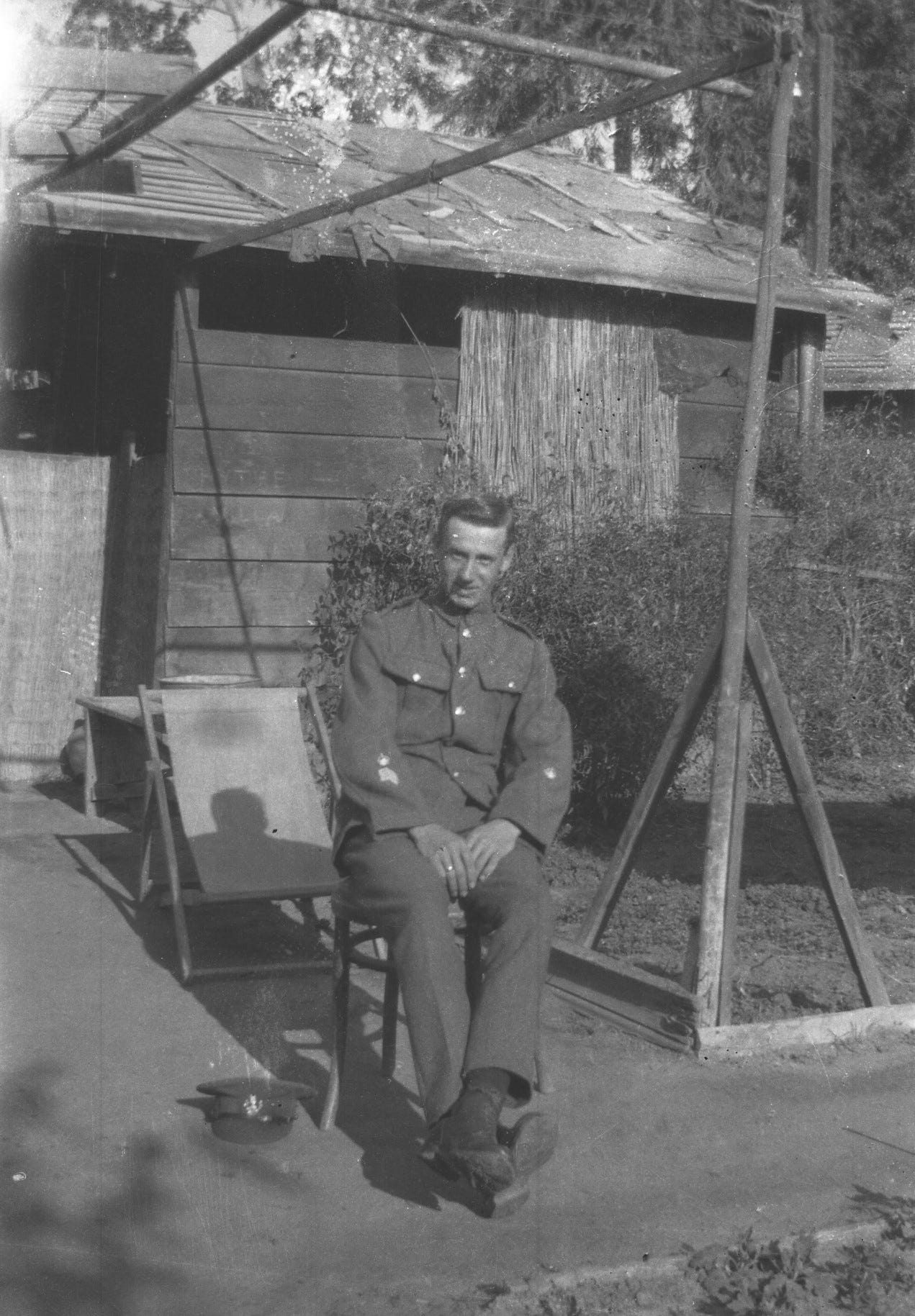A Latter-day Saint at the Imperial School of Instruction, Egypt
Charles Scott's time in the British Army, 1914-1919
In August 1915, English soldier Charles Scott lay in a hospital bed in Malta nauseous, sweating, and in great discomfort. Like many other British soldiers fighting in the Mediterranean, he had contracted typhoid fever and was having a hell of a time with it. While in his bed, upsetting news reached the Scott family that his older brother, Elijah, had died from wounds while on board a ship near Gallipoli and his body had been buried at sea. Tears would have been shed by all.
The two brothers were alike in many ways. Charles had joined the British Army in August 1914, about a week after Elijah had enlisted. Charles was posted to the King’s Own Royal Lancaster Regiment and Elijah found himself in the Lancashire Fusiliers. The Scott brothers were hard workers who had both been employed working on the railway in Todmorden. The two brothers, the younger perhaps inspired by the older, had both chosen to fight for their country.
A Mediterranean Meeting
Charles had sailed with his battalion from Avonmouth, Gloucestershire, in June 1915. Elijah, who was a corporal, had also been fighting in the Dardanelles. The two brothers had the opportunity for a brief meeting. As Charles and his battalion arrived he found out he would be replacing Elijah. In the trenches of the Dardanelles, they were briefly reunited which was noted to be a “glad one.” The reunion was a fleeting moment of humanity and joy in an otherwise depressing and dire situation. It wouldn’t be long before Elijah would be back at the front and the two brothers, along with a cousin, fought together for a week. In July the 6th Battalion of the King’s Own Royal Lancaster began participating in the fighting for Gallipoli which involved brutal trench raids and bombardments and was ultimately a grinding battle of attrition.
Elijah wrote a letter to his mother in August 1915:
”I haven’t seen Charlie for about three days, but he was all right then, and it is about a week since I saw Harry, but he was in the pink then. We have just had a good issue of cigarettes from Todmorden. It ran about seven packets of cigarettes per man. Then we had some chocolate. By Jove! it was grand.”1
Tragically, Elijah was wounded during the fighting just a few days later. One challenge with the invasion is that trenches were not dug deep enough and so many soldiers were shot while trying to hunker down in the shallow defences. Although he was evacuated to a ship he died from his injuries and was buried at sea about a week later. Thousands of men on both sides of the conflict died from combat action, injuries, or disease in this Theatre of War. It was a bloody battle that ultimately resulted in the Ottomans retaining control of the Gallipoli peninsula.
While the fighting in the Dardanelles claimed its victims, there were plenty of soldiers who became sick from dysentery, typhoid, and other diseases due to the unsanitary conditions. Providing soldiers with enough water was a constant struggle, especially in the dry, dusty climate.2 As the weather changed issues related to hygiene and heating were increasingly discussed by military leaders. He fought on the frontlines for two months, but during this time Charles became sick and needed to be evacuated. He was taken to Malta and given time to recuperate, but for years afterwards, he would live with the effects of his sickness.
Recovery
Before long, Charles was transferred back to England to recover in Crumpsall Hospital in Manchester, which was close to his family, although his parents’ relationship became dysfunctional some years earlier. His father had been “associating with other women” since at least 1903. The couple would formally divorce in the early 1920s. His mother, Mary (known as Nellie to most), was probably pleased to have one of her sons return from the war, but not necessarily to see him so debilitated.
An aspect of this story and Charles’ recovery relates to faith. Charles’ mother, Nellie, had long been a person of religious conviction. She had been a Spiritualist Medium with strong convictions. She would travel from town to town for events and charge a fee. Although she had friends who were Latter-day Saints and had met with the missionaries many times she had been unconvinced. Besides, she was making good money with her work as a Medium.
Over time, however, Nellie became uneasy. She would think about what the missionaries had shared with her, making her uncomfortable. Unfortunately, one day as she went about her business as a Medium she had an accident and for 6 months was unable to care for herself and unable to walk. She moved from place to place and met with two doctors who both told her she would not walk again.
A Latter-day Saint friend offered to care for her and so Nellie moved in with her. When her friend emigrated to America another Latter-day Saint friend offered to host her. During this time Nellie began attending Church meetings and eventually received a testimony and was baptised. She also received Priesthood administrations in which she was promised that if she was obedient to God’s commands, she would be healed. Despite what her doctors had told her, over a number of years she recovered.
Nellie joined The Church of Jesus Christ of Latter-day Saints in April 1914 and appears to have shared the gospel with her children. When Charles was sent to Manchester he had the opportunity to attend meetings and was baptised on 8 April 1916. Not much is known about why he chose to be baptised, but his mother’s conversion and perhaps the death of Elijah might have spurred his own investigation of the Church. Later she would declare:
I hope that if any read this testimony when sick and helpless, they will take courage and have faith. Seek the servants of the Lord and ask your heavenly Father to help you. I am sure He will show His wisdom in your case. The Lord has taken one of my boys, but I have one left, and I am glad to say he also is a member of the Church. I thank God that I heard the gospel. I am trying to serve God. I know I can never pay Him the debt I owe, but I hope I may be kept faithful to the end.3
By early 1918 Nellie had recovered well enough to be called as a missionary for The Church of Jesus Christ of Latter-day Saints. She still lived in Rochdale but would travel around teaching, sharing missionary publications, and other similar activities.4 While the world war raged in different parts of the world, she did what she could to serve others and to share her faith.
Back to the War
In 1916 Charles, as a freshly baptised Latter-day Saint, had recovered enough to return to military service and joined the Loyal North Lancashire Regiment. In October he was sent to German East Africa where he fought until February 1917 before being sent to fight in Egypt and Palestine. He joined different regiments over time but also contracted other illnesses, including dysentery and malaria. Disease, a common stalking figure in wars, caused him considerable damage and discomfort during his military service. He ultimately spent time in five hospitals recovering from different ailments. Eventually, in June 1918 he was deemed no longer suitable for active military service and was transferred to the Labour Corp. He was stationed in Cairo, Egypt, to work at the Imperial School of Instruction, a military academy for the British Army and its allies.
Courses were run for officers and non-commissioned officers with additional courses on machine-guns, signalling and communications, grenade throwing, and more. As a signalman before and during the war, it would make sense that he trained others in this important role. Signalmen were typically based close to the frontline to relay information to officers and to communicate orders.
Zeitoun was a large British training facility with soldiers billeted nearby in tents and later in sleeping huts. Here Charles was safe from the frontline, but even in training environments, there could be injuries and accidents. Thousands of servicemen passed through the Imperial School for their training. Charles would have participated in delivering specialised signalling training related to the conditions in Egypt including telegraphy, camel transport, how to function during sandstorms, and other related conditions.
Training in desert conditions was not necessarily easy. Sand and dust as well as the scorching sun caused challenges and was a stark contrast to the greenery of Lancashire that Charles had lived in for most of his life. When peace was declared in November 1918 he remained in Egypt in a training capacity.
Finally, in June 1919, Charles returned home on leave. While there the Rochdale Relief Society organised a party for him where he had the opportunity to share some of his amusing incidents since joining the army. There were also games and refreshments, with people at the conclusion of the night wishing him a speedy return home.5
Their wish was granted and shortly after reporting for duty, he was discharged from the army.
Later Life
In October 1919 he was living at home and was ordained a Priest. Then, on 10 July 1920, he was ordained an Elder. We might wonder how he had been affected by what he had seen and experienced, but he was evidently resolute in his observance of his faith.
Ten days after his ordination as an Elder, Charles, like many other Latter-day Saints, emigrated to Salt Lake City, Utah, arriving in America on 1 August. Prospects in England after the war were poor and the desire to gather in a centre of strength was a strong pull for men and women alike. His mother, Nellie, finally broke ties with her husband and emigrated with Charles.6 There she secured a divorce and in April 1923 remarried an English Latter-day Saint.7 Tragically she only lived a few months and died in September. Before her passing, however, the mother and son went through the Logan Temple and had the work done for Elijah and other relatives.
In America, Charles quickly became a naturalized citizen. Shortly after arriving in Utah, he married Annie Dalton who was also from the Rochdale branch, and they had two children. Unfortunately, the marriage didn’t last and Charles remarried another English girl and had a daughter. Over the years he worked in different jobs but always sought to provide for his family.
Sadly, Charles would forever live with the effects of the injuries he sustained from the war. Still, he lived until the ripe old age of 97 when he passed away in 1991.
‘Died in Hospital,’ Rochdale Observer, 16 October 1915, p. 10.
War Diary, https://www.ancestry.co.uk/imageviewer/collections/60380/images/42871_625537_11749-00029?usePUB=true&_phsrc=OZk467&pId=31588
Mary E. Scott, ‘Left Spiritualism for Truth,’ The Latter-day Saints’ Millennial Star, Vol. 80, No. 46 (1918), pp. 725-726.
‘From the Mission Field,’ The Latter-day Saints’ Millennial Star, Vol. 80, No. 6 (1918), p. 95.
‘Socials,’ The Latter-day Saints’ Millennial Star, Vol. 81, No. 26 (1919), p. 416.
‘Woman Charges Husband Fails to Support Her,’ Salt Lake Tribune, 19 June 1922, p. 12.
‘Gets Divorce from Husband in England,’ Ogden Standard-Examiner, 28 August 1922, p. 6.









